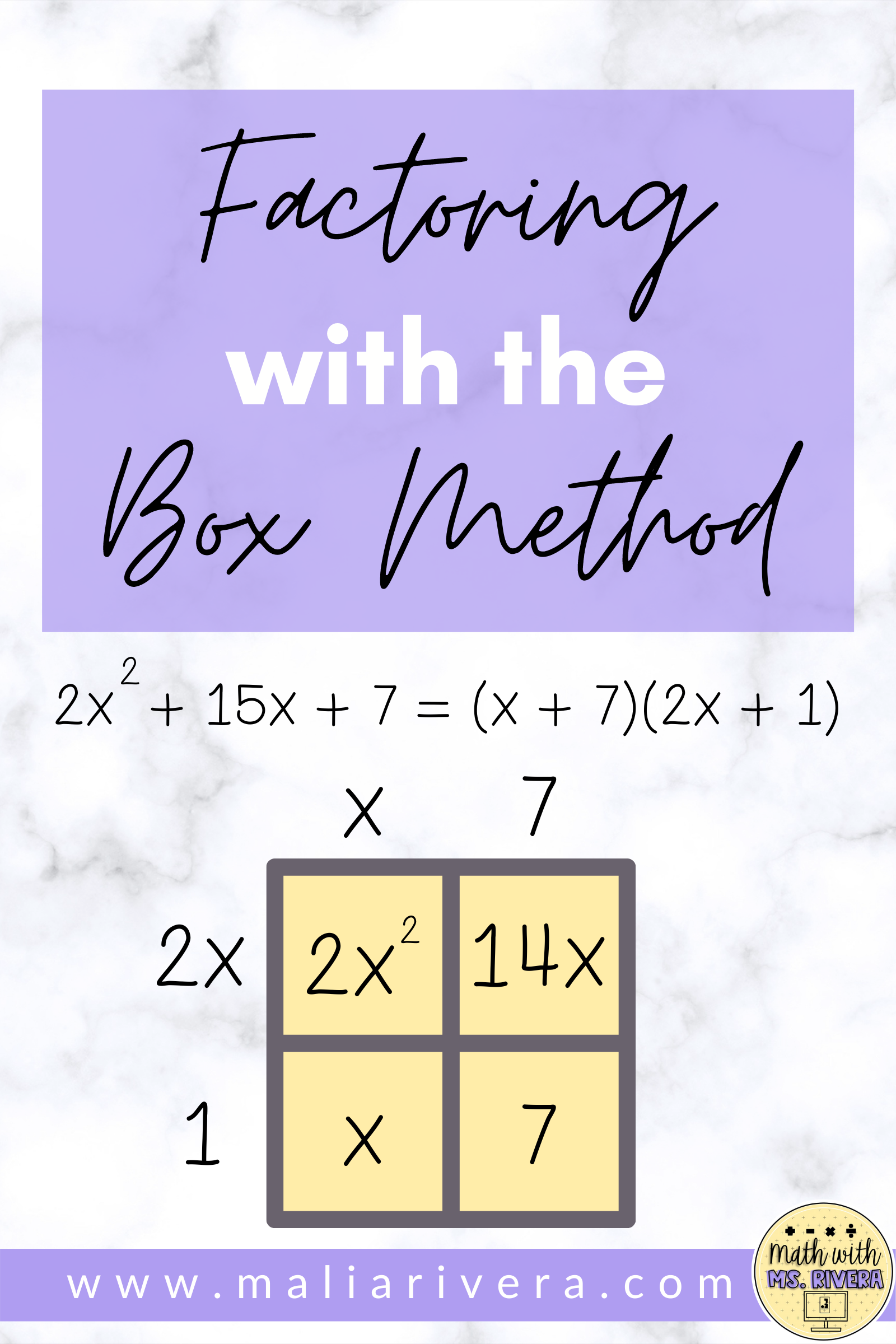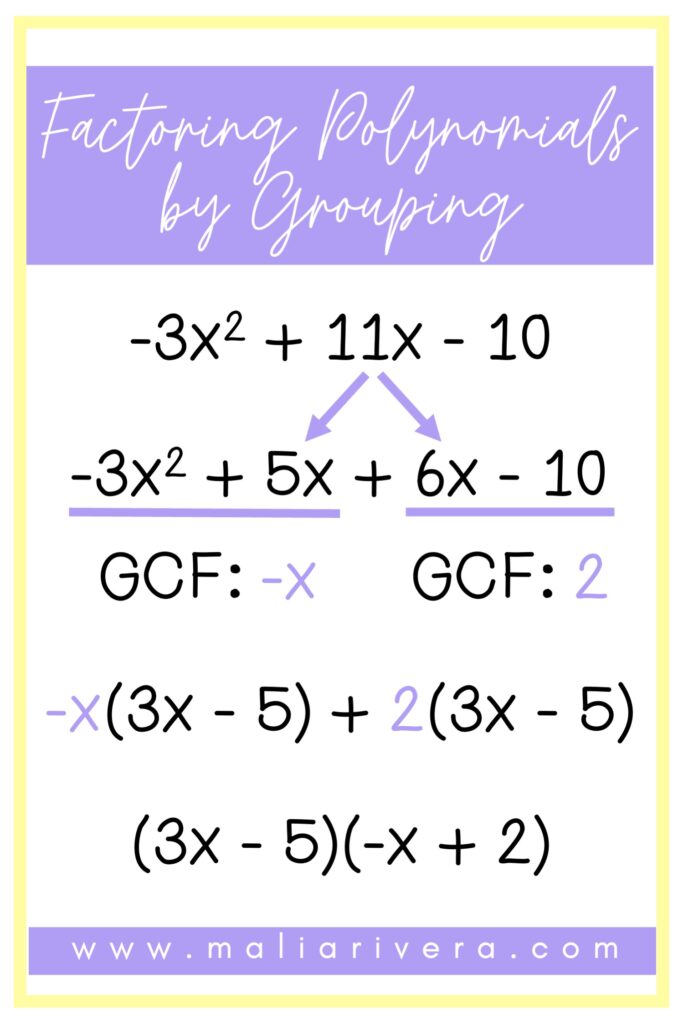One of my favorite topics to teach in Algebra 1 is factoring polynomials. I love solving puzzles and to me, factoring is a fun number puzzle! This is also a skill that carries throughout the other high school math content. Because of this, I make it a point to make connections to factoring throughout the year. Even before I actually teach it!
Number Sense Routines to Prepare Students for Factoring
Throughout the year, I do number sense routines to build number sense. The routines I do either have them work on basic number sense, or I have them apply to specific skills we are working on. One routine I do helps students practice thinking about “what number multiplies to ac, and adds to b.”
Instead of saying “ac” and “b” I give them numbers that they would be seen in a factorable trinomial. For example, “What two numbers multiply to 12 and add to 7?”.

In the beginning, students may have a tough time thinking of these numbers, but as they keep doing them it gets easier. I suggest starting with numbers that are all positive. Then change it up by adding in some negatives.
Here are some examples of factoring related number sense routine questions:
“What two numbers multiply to 18 and add to 11?”
“What two numbers multiply to -45 and add to 4?”
“What two numbers multiply to 9 and add to 0?”
“What two numbers multiply to -80 and add to -2?”
Once we get to our factoring unit towards the end of the year, students think factoring is a breeze!
Factoring Polynomials Using the Box Method
Factoring polynomials using the box method is perfect for those students who need to keep everything visually organized. The basis of this method uses the idea of factoring out the greatest common factor in smaller chunks – which seems to be a lot of these methods.
Here are the steps:
- Draw a two by two box.
- Put your ax² term in the upper left box.
- Put your c term in the lower right box.
- Identify two factors that multiply to ac and add to b. Put those two factors in the diagonal boxes remaining. It does not matter which one goes where!
- Find the greatest common factor of each column and row. Write your answers on the outer edge.
- The numbers on the outer edge are your factors!
Check out this video for another look at how to factor polynomials using the box method.

Factoring Polynomials Using Algebra Tiles
Algebra tiles are one of my favorite math manipulatives to use. They can be used to gain a better understanding of abstract concepts by making them more concrete. You can check out other ways to use algebra tiles virtually in this blog post.
Factoring polynomials with algebra tiles is perfect for kinesthetic learners. Students are going to physically create trinomials that they need to factor. Knowing that only certain tiles can be created by specific lengths help students to find the factors. Essentially, we are doing the reverse of multiplying polynomials – which is what factoring polynomials is!
Don’t you love those connections?!
Check out this video to see how to factor polynomials using Algebra tiles.
Factoring a Polynomial by Grouping
Factoring polynomials by grouping is a classic way to factor! Did you know that it is also known as the “British Method” for factoring?
Growing up, I was told that factor by grouping was really only used when you had a polynomial with 4 terms. When I started teaching, I found that you could use it for factoring a regular trinomial as well! The key was to turn the trinomial into a 4-term polynomial.
Again, factoring by grouping is another organizational method that can help students visually see the greatest common factor being taken out.
Check out this video of a worked-out problem to see how it can be used to factor a trinomial.

After reading through these factoring methods, I hope you learned something new! All three methods are solid methods to help students learn how to factor. Do you have a favorite method to factor polynomials?
Check out these factoring resources in my Teachers Pay Teachers store!
Let’s Connect!
Want to learn more about how you can get your students coming back for more math? Sign up for my list below and get a free Algebra activity!


